Note: This website was automatically translated, so some terms or nuances may not be completely accurate.
What PR professionals saw and felt: The appeal of Ad Museum Tokyo
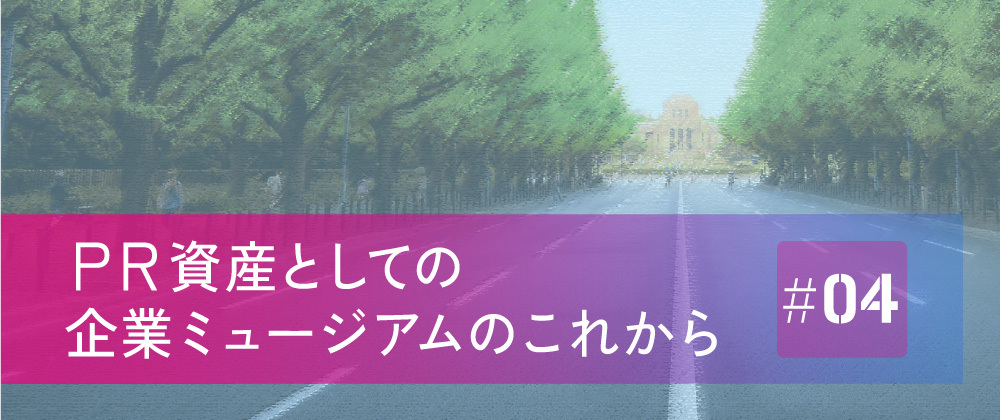
Corporate museums occupy a buffer zone straddling the academic realm of "museums" and the business realm of "corporations." They are organizations that collaborate diversely with corporate departments such as PR, branding, advertising, and human resources. In this series, PR professionals introduce various museums run by corporations, exploring their roles, functions, and potential.
Advertising has brought innovation to people's lives and business. Stepping into Ad Museum Tokyo, which houses the history of advertising, offers numerous discoveries that help decipher the times. No matter how valuable or precious the materials, simply displaying them isn't enough to convey their significance. Throughout this museum, you'll find thoughtful touches designed to resonate with the underlying thoughts and emotions, sparking visitors' imagination. In this virtual age, it offers experiences only possible in a physical space. We introduce the Ad Museum Tokyo through a PR (Public Relations) lens, highlighting how it not only conveys history but also engages with societal challenges through its exhibits, fostering initiatives that connect to the future.
Reporting and Text: Ikuyo Nakagawa (PR Consulting Dentsu Inc.)
Ad Museum Tokyo is located on the B2 floor of Caretta Shiodome, a shopping mall just a short walk from Dentsu Inc.'s headquarters in Shiodome, Tokyo. True to its name, it is Japan's only museum dedicated exclusively to advertising. It is operated by the Hideo Yoshida Memorial Foundation, a public interest incorporated foundation established to carry on the legacy of Hideo Yoshida, Dentsu Inc.'s fourth president, who dedicated himself to the development of the advertising industry. Opened in 2002 to commemorate the centenary of his birth, and renovated in 2017 for its 15th anniversary, its purpose is to make advertising materials widely accessible to the general public and deepen understanding of the social and cultural value of advertising communication.
Annual visitors, which were around 80,000 before the renovation, increased to 100,000 afterward. Today, general visitors, including students, account for about 60-70% of the total, outnumbering advertising professionals. University seminars specializing in advertising and marketing frequently visit as a group. Recently, articles introducing it as a stylish spot or recommended date location have increased, attracting many young couples. Its location within a shopping mall and the bright, open glass-walled design after the renovation create an atmosphere that makes it easy to drop in casually after shopping. Cumulative visitors have now surpassed 2 million.
Did Marketing Begin in the Edo Period? The Power of Flyers That Showcased Business Innovation
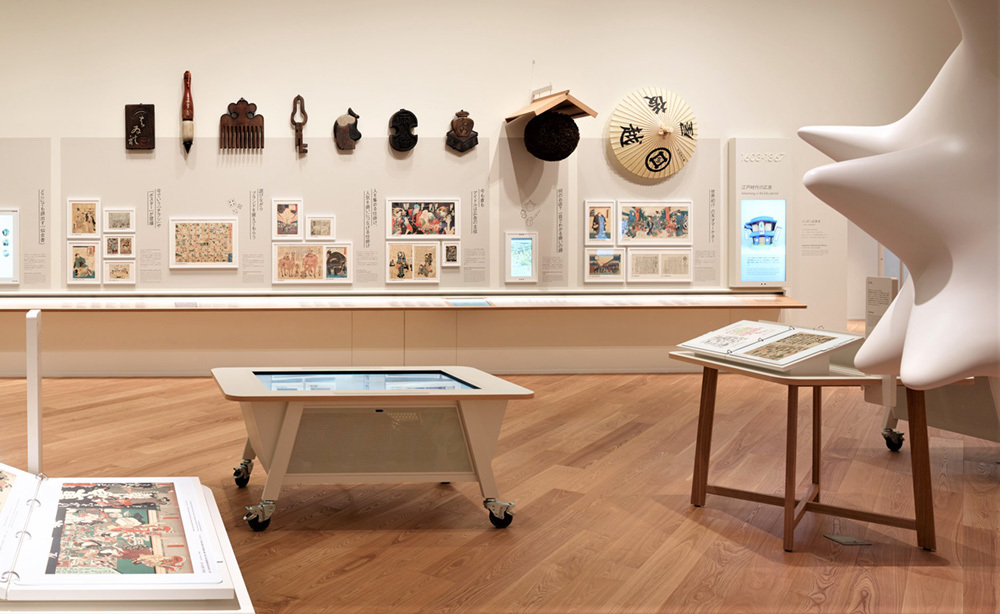 Edo Period Exhibition Corner (Photo courtesy: Ad Museum Tokyo)
Edo Period Exhibition Corner (Photo courtesy: Ad Museum Tokyo)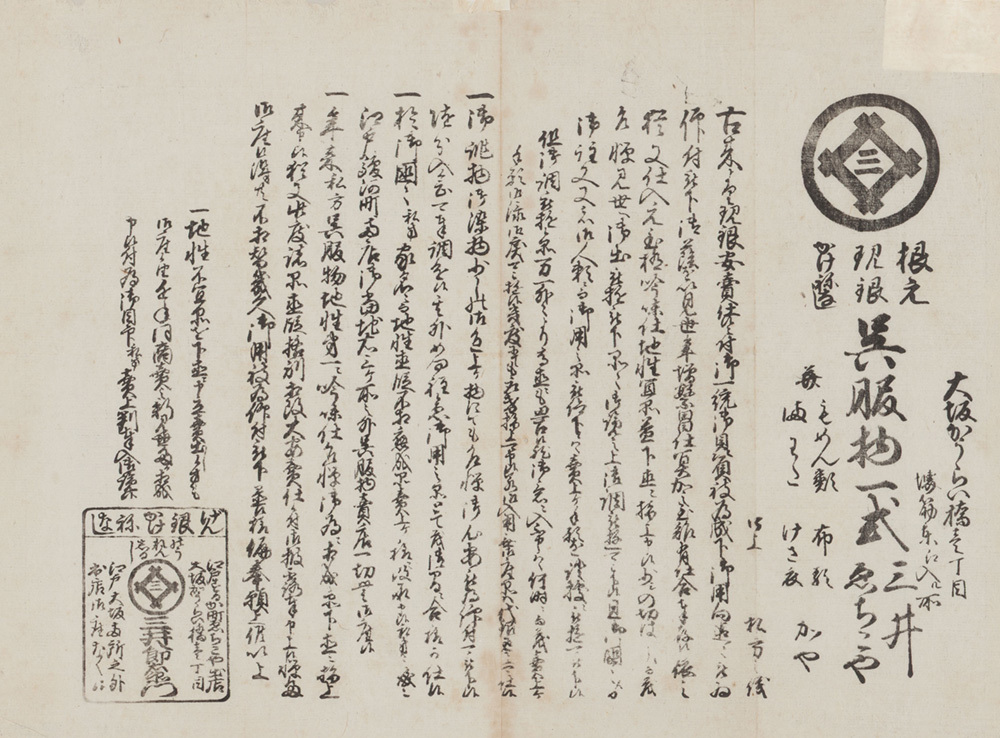
The museum houses over 330,000 items from the Edo period to the present, but its Edo advertising exhibition is particularly noteworthy. It's so fascinating that Peter Drucker declared, "The origins of marketing lie in Japan's Edo period." In his book "Management," he wrote, "Marketing began with Mitsui Takatoshi, founder of Echigoya," and I'd like to briefly touch on this.
At the time, kimono shops visited samurai residences and wealthy merchant homes to take orders, with customers paying during the year-end and New Year holidays. Mitsui Takatoki abolished this labor-intensive method of collecting payments, instead pioneering a new business model: "cash on delivery, no haggling," where transactions were conducted in cash at the storefront, allowing him to lower prices. Furthermore, he overturned the prevailing practice of selling kimono fabrics only by the bolt, allowing customers to purchase only the amount they needed. This approach gained immense popularity among the common people.
This was truly a business innovation. To publicize this new sales method, Echigoya created "flyers" (hikifuda, akin to modern leaflets) and distributed them to the common people. The flyer's content likely spread by word of mouth from person to person. The synergy between advertising and organic PR brilliantly boosted sales. As customers flocked to Echigoya, other shops had no choice but to follow this new business model. This trend also likely changed people's mindsets. As long as payment was made, samurai and townspeople alike were treated equally. While the innovative business idea itself was brilliant, the power of the flyers that made it known to the world was immense. A single flyer not only contributed to the development of advertising culture but also led to changes in people's lives and society.
Kabuki Actors: Influencers of the Edo Period
The Edo period also saw many other roots of advertising that connect to today. The cherry blossom viewing events in Yoshiwara, where crowds gathered, were prime advertising venues. The popular "E-sugoroku" board game, beloved by commoners, cleverly promoted shops and products within the game itself, much like modern game apps. Advertisements also appeared throughout Kabuki plays, resembling corporate tie-ins. Furthermore, Kabuki actors were influencers; word-of-mouth spread through them like social media. The influence of popular talents remains unchanged, past and present. The Edo-period creators behind these campaigns are introduced in a modern-style animated interview format (see image below). Figures like Hiragane Gen'nai, Japan's first copywriter, and Tsutaya Shigezaburō, the sharp-eyed producer who discovered talents like Sharaku and Kitagawa Utamaro, are featured. The presentation goes beyond simply listing their achievements; it delves into the reasons behind hit products and the secrets to spotting talent, making it impossible not to listen to the end.
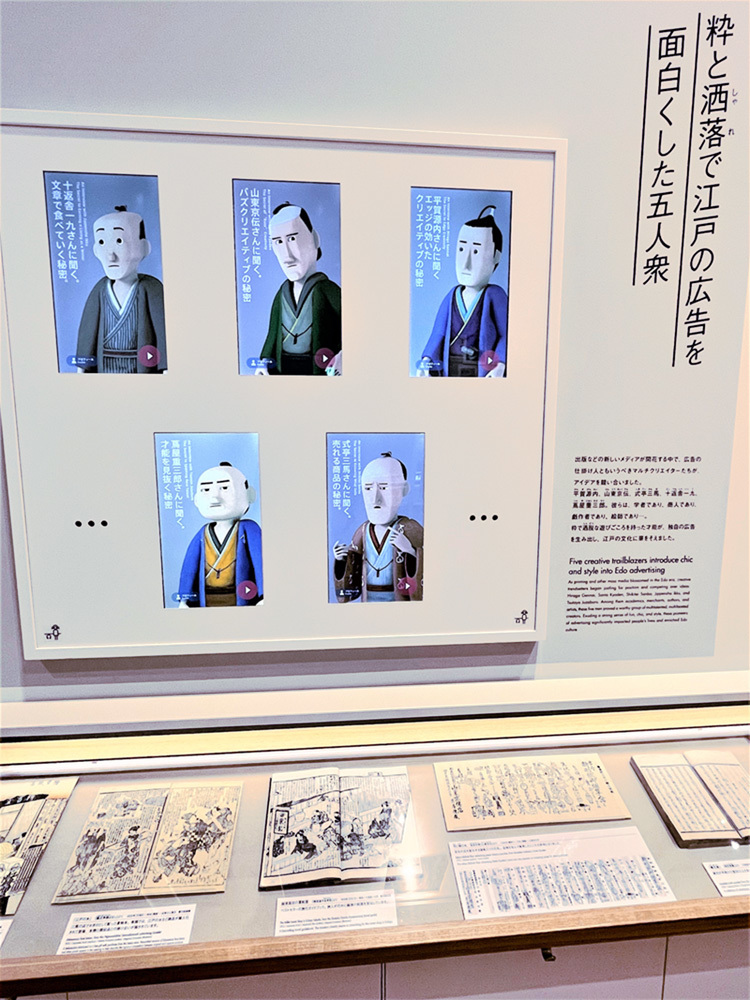
Advertisements from Wartime You Should See Now: Lessons from Advertising History
The fascination isn't limited to Edo-period ads. Ad Museum Tokyo comprehensively covers Japanese advertising history alongside themes that help interpret each era. Yet, there are certain ads we especially want people to see today. These are advertisements from wartime, known as the "Winter Era." It was a time when the role of advertising shifted dramatically from promoting glamorous products to boosting national morale. Exhibits include ads featuring slogans designed to rally the war effort, such as "We won't ask for more until we win" and "Advance, one hundred million fireballs!"
These days, there isn't a day when we don't see news of the war in Ukraine. Yet, living in peaceful Japan, it's easy to think of it as something happening in a distant country. Seeing these exhibits, however, makes one realize anew that just two generations ago, war was actually happening in Japan.
Moreover, it's certain that not only advertising but also public relations accelerated their propagandistic aspects. There was indeed an era in Japan when information was strictly controlled, ensuring only information convenient for those in power became topics of discussion. As they say, "Advertising is a mirror reflecting society and humanity." Changes in advertising expression symbolize the shifting tides of time. Even today, there remains much we should learn from this.
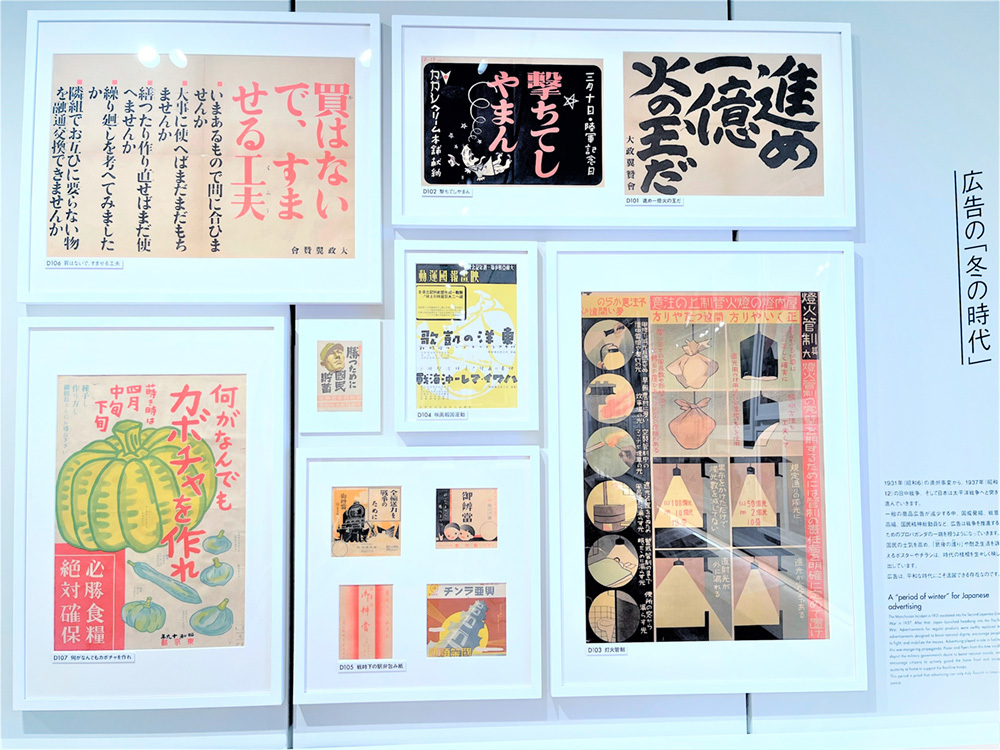
The Pursuit of Captivating Presentation
What further enhances the fascinating content from each era is the "art of presentation." No matter how valuable or precious the materials, simply displaying them doesn't convey their significance. From a PR perspective, it's crucial not just to present factual information through conventional panel displays, but to showcase it in a way that conveys the background, thoughts, and emotions behind it, making it easy to understand.
While the facility itself is not large, the exhibition areas feature interactive buttons that allow visitors to delve deeper. Pressing these buttons transforms the flat displays into sudden bursts of sound and video. The self-introduction scenes of historical figures like Hiragane Gen'nai, mentioned earlier, are prime examples. This mechanism, making it seem as if someone who lived in that era has appeared before you, further stimulates the viewer's imagination.
Given that advertising professionals created the exhibits, it's only natural that the instantly captivating display titles speak volumes. For example, "The World's First!? Genius Marketer" refers to Mitsui Takatoshi of Echigoya, the merchant innovator introduced earlier. All explanatory texts are kept under 200 characters, ensuring visitors never grow bored. There's also a digital exhibit where you can freely touch and view thumbnails that appear on monitors, allowing unlimited browsing of TV commercials and posters from the 1950s to the present. The author spent most of their time here, overcome with nostalgia (laugh).
When your eyes tire from the digital displays, head to the adjacent analog exhibits. Storyboards from famous commercials of the era are likely only viewable here. While everything is probably processed digitally now, storyboards drawn with pen and paper are the ultimate content, conveying the creator's vision. The scribbled notes in the margins are particularly fascinating.
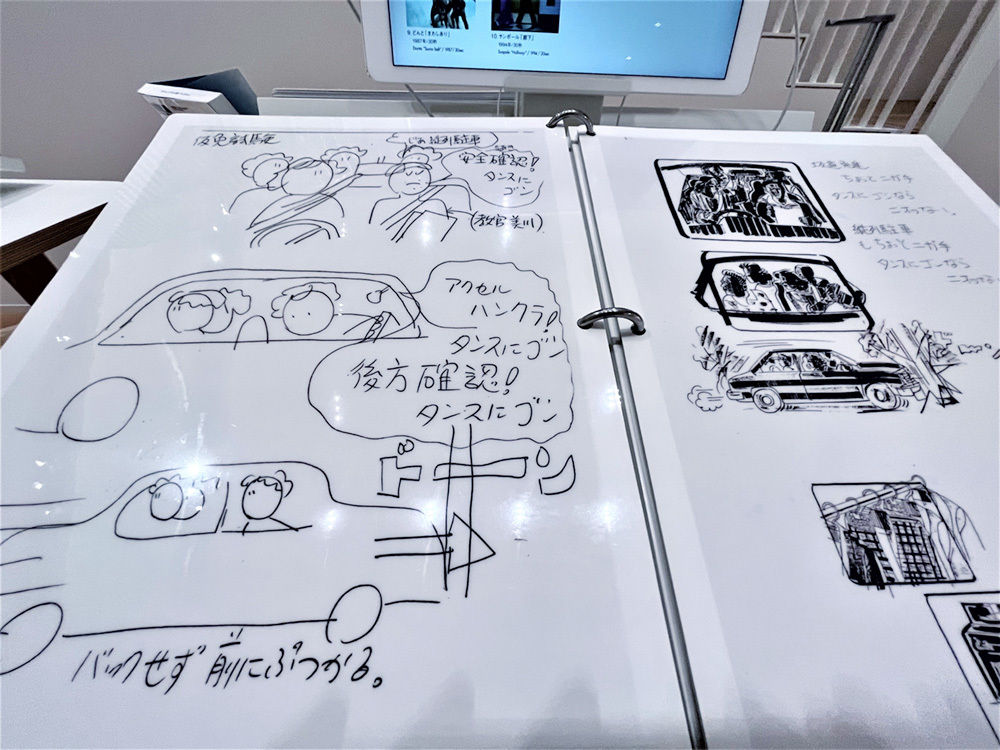
Diverse offerings like skill-sharing workshops taught by professionals and a library that "lends out people"
Additionally, Ad Museum Tokyo hosts annual special exhibitions showcasing the latest designs and advertisements from world-renowned creative awards like London, Cannes, and New York, alongside its permanent displays spanning different eras. During my visit, the Cannes Lions 2020/21 exhibition was running, featuring detailed explanations of the works and a popular vote by visitors.
Other offerings include advertising workshops where visitors can learn professional skills, and unique events like the "Human Library," where individuals facing societal prejudice—such as members of the LGBTQ community—become "books" and engage in dialogue with general "readers." These events are expected to resume once the COVID-19 situation stabilizes.
It goes beyond simply housing advertising history and materials. Through diverse activities, it fosters human connections and initiatives that reach toward the future, setting it apart from the conventional concept of a corporate museum.
Alongside its brand statement
Ad Museum Tokyo has a brand statement. The message, "Always bringing you new discoveries," conveys a firm belief: the universality of advertising—what captivates people—remains unchanged across eras. Yet, it also emphasizes that countless past advertisements still hold new insights and discoveries, reaffirming that advertising is truly fascinating. This conviction and stance were palpable throughout the museum.
Starting with the Edo period, the roots of advertising, through the Meiji era that saw the birth of newspapers and magazines, to the digital age of today, the deeper one delves into each stage of this evolution, the more new discoveries emerge. There is much to learn from the history of the relationship between advertising and its times, and between people and advertising.
We spoke with Tucker Tsuruga of Ad Museum Tokyo about the future. "It's said that there's no other museum in the world that comprehensively covers the history of media and advertising. Even just 'nishiki-e' (color woodblock prints) are highly valued as art, especially overseas. Here, however, we spotlight 'nishiki-e' as a medium reflecting the social climate of its time. We want to spread awareness of this perspective more widely and aim to become a uniquely world-class museum. To achieve this, we truly want people to see and feel it in person. So, beyond Tokyo, we hope to establish Ad Museum XX somewhere, domestically or internationally... We'd like to start by making touring exhibitions a reality."
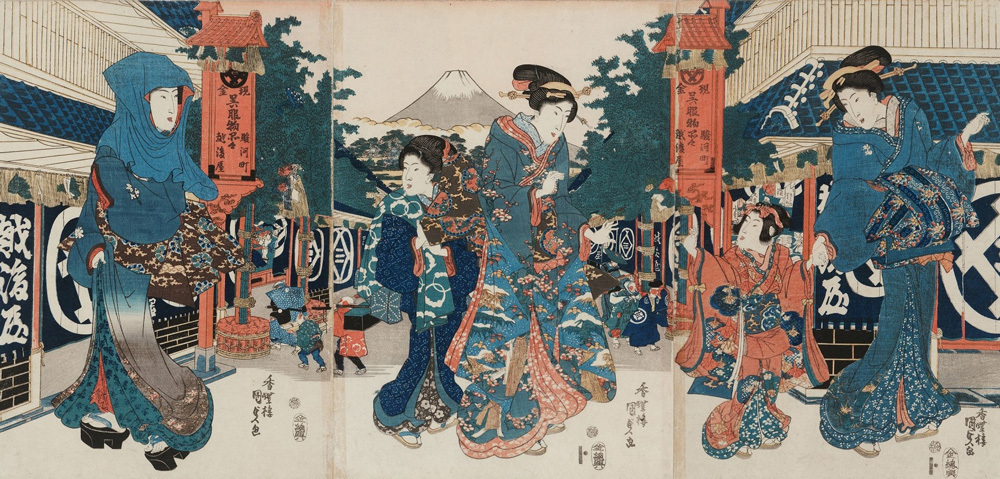
I see. Ad Museum Osaka, Ad Museum NY... the ideas are endless. While virtual museums operating regardless of location have increased recently, this reminded me of the appeal of a real "space" mentioned by Professor Naoya Takayanagi of Taisho University in the first installment of this corporate museum series. It connects to the question of "Who do you go with?" Do you go with your lover, friends, or family? If you have a great time there, you could spend hours. That's an experience you can't get virtually.
Finally
The author is an employee of a PR company that celebrated its 60th anniversary last year. The museum's brand statement reads: "Laughter and tears, surprise and empathy. What captures the heart transcends time and connects us at our core." PR is no different. The innovations that overturned conventional business wisdom in the Edo period were meant to improve people's lives. Those various tactics are PR itself, and Edo-period marketing overlapped with PR. One place is enough. Someday, I truly hope to establish a PR Museum right next to the Ad Museum Tokyo. I also want to note that it was President Hideo Yoshida who first recognized PR, born in America, and introduced it to Japan as a "business."
The Ad Museum Tokyo website is here.
For the Hideo Yoshida Memorial Foundation, a public interest incorporated foundation, click here.
[Editor's Note]
While viewing the exhibits at the Ad Museum Tokyo, I suddenly recalled that famous joke: "The youth of today are a troublesome bunch" – supposedly inscribed in cuneiform on the walls of ancient ruins. Media changes with the times. Walls became paper, paper became newspapers, magazines, posters, and now digital signage joins the mix. Radio pioneered broadcast media, which now blossoms in a profusion of forms: television, the internet, and social media.
When media changes, people suddenly start to panic. They fear being left behind if they don't ride the wave of the times. But there's no need to panic. The fundamental feelings deep within people haven't changed since ancient civilizations. Because in every era, "young people" are a troublesome presence, "old people" are always complaining, and people always wish to share those feelings widely, to find someone who understands. With that in mind, exploring the museums tucked away underground in Shiodome might just be a fun diversion.
Was this article helpful?
Newsletter registration is here
We select and publish important news every day
For inquiries about this article
Back Numbers
Author

Nakagawa Ikuyo
PR Consulting Dentsu Inc.
Integrated Communications Bureau
Chief Consultant
Long experience in planning, organizing, and executing PR events for government agencies and corporations. After returning from childcare leave, worked in the management department to promote operational efficiency, including employee work practices and knowledge sharing. Also involved in developing the company's corporate philosophy. Currently supports internal and external branding while planning and executing internal initiatives. Co-authored books include "Welcome to the Corporate Museum" (Jiji Press) and "Proposals for PR 4.0" (Sendenkaigi). Certified PR Planner by the Japan Public Relations Association.




